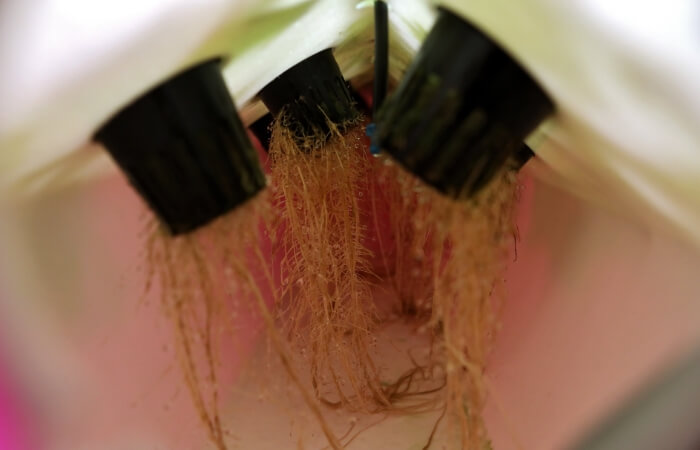As a gardening enthusiast, I love modern raised garden beds for growing flowers and vegetables.
Why? Raised beds are filled with your chosen mix of soil and compost and offer a tidy and controlled gardening experience.

However, in-ground gardening invites you to get hands-on with the natural soil in your yard, planting directly into the earth. So, really, it’s all about your personal preferences and goals.
Let’s dig into the details and see which might be a better fit for your garden gloves!
Choose raised garden beds if:
- You want less bending and physical strain
- You need precise control over soil conditions
- You have limited space or poor native soil
- You prefer a more structured garden appearance
Opt for in-ground gardens if:
- You enjoy traditional gardening with hands-on work
- Budget is a primary concern
- You desire a wide variety of plants, including deep-rooted ones
- You aim for a natural look that blends into the landscape
Raised Beds or In-Ground: Gardening Comparison
Let’s peel back the layers of soil and examine how these two methods stack up against each other across various gardening aspects.
Quick Comparison At A Glance
Raised Garden Beds
PROS
- Reduced back strain from less bending.
- Custom soil mix for better growth.
- Earlier planting in warmer soil.
- Fewer weeds and pests.
CONS
- Higher initial costs.
- Soil dries out faster.
- Limited depth for some plants.
In-Ground Garden Beds
PROS
- Cost-effective using existing soil.
- Suitable for diverse, deep-rooted plants.
- Blends naturally into the landscape.
CONS
- More labor for maintenance.
- Potential drainage issues.
- Higher weed and pest presence.
Compare Setup Efforts
If you’re looking for a quicker start with less strain on your back but don’t mind spending more upfront, raised beds could be your ticket.
But if you’re okay with putting in some good old-fashioned labor and want to keep costs down, then an in-ground garden might be your horticultural home sweet home.
Setting up a raised bed can typically be done over a weekend, while preparing an in-ground garden may take several days of work spread out over weeks, depending on the size and condition of your land.

Raised beds often require more initial effort and expense.
You’re building from scratch, which means buying wood, stone, or metal materials for the bed frames, plus soil and compost to fill them. And while these excellent soil conditions from the get-go, your wallet might feel lighter after all is said and done.
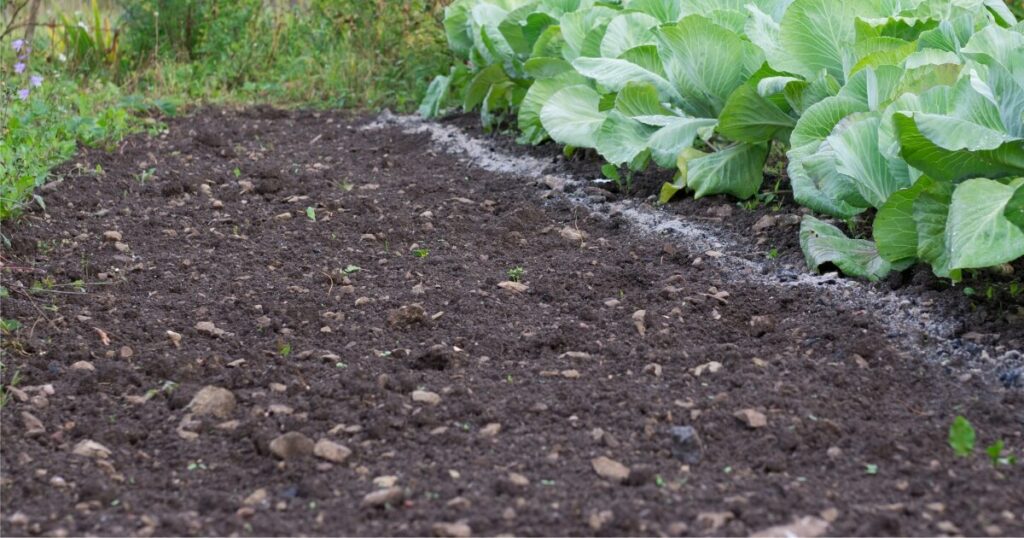
In-ground beds are more about working with what you’ve got.
The setup can be as simple as grabbing a shovel and turning over the earth beneath your feet. Sure, you might want to enrich the soil with some compost or fertilizer, but generally speaking, it’s less demanding on your budget compared to raised beds.
However, don’t underestimate the sweat you’ll put into preparing and maintaining traditional garden plots – there’s no shortcut to digging and weeding by hand.
Compare Supported Plants
When you’re planning your garden lineup, consider that raised beds are great for demanding plants who want precise conditions. In contrast, in-ground gardens suit those laid-back plants that need room to sprawl or sink their roots deep into the soil in your backyard.
Raised garden beds often cater to vegetables and herbs that prefer well-drained soil and a bit of pampering.
Think along the lines of leafy greens like lettuce and spinach, root veggies such as carrots and radishes, and a medley of herbs from basil to thyme. These guys love the fluffy, nutrient-rich soil you can provide in a raised bed.
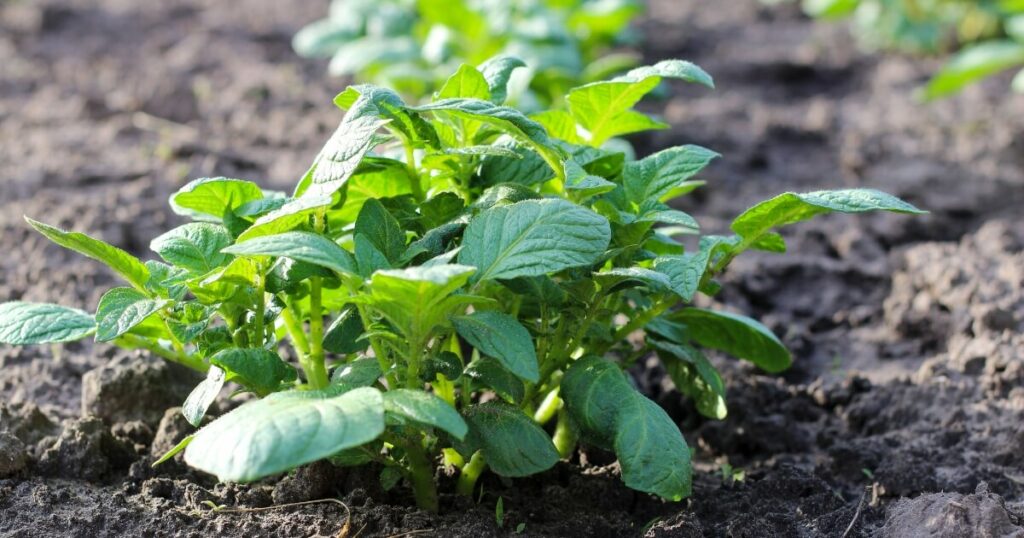
Deep-rooted vegetables like potatoes and asparagus or sprawling squash vines that crave space to roam and often fare better in-ground garden beds.
They take advantage of the room to stretch their roots far into the earth, which can be somewhat limited in a raised bed setup.
It’s also worth noting that perennials, including berry bushes and fruit trees, might prefer the traditional in-ground approach. They’re playing the long game and need a stable environment year after year, which is something natural ground soil is more likely to offer than the confined space of a raised bed.
Compare Soil Health & Maintenance
Raised beds require more active management but give you precise control over soil conditions, while in-ground gardens ask for less frequent but potentially more intensive labor to maintain long-term fertility and structure.
Raised beds are known for their stellar soil conditions.
You’ve got this contained space that you’ve personally filled with a premium blend of soil, compost, and other organic matter.
Your plants get all the nutrients they need without any unwanted fillers. Plus, since you’re not walking on the soil, it stays aerated and fluffy, which roots absolutely love.
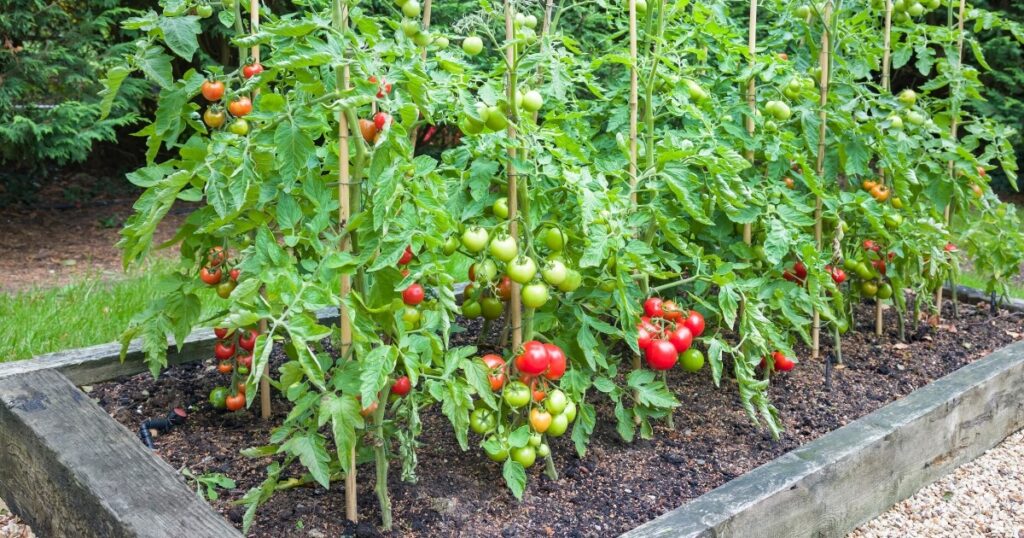
However, maintaining this prime real estate requires some upkeep. You’ll need to top off with fresh compost or soil amendments each season to replenish nutrients that your plants have used up.
And because raised beds can dry out faster than in-ground plots, mulching becomes your best friend to retain moisture and keep those microorganisms happy.
In-ground gardens are more self-sustaining when it comes to soil health, assuming that you start with good earth.
The ground naturally contains an ecosystem of worms and microbes that work tirelessly to break down organic material and aerate the soil. This means less intervention is needed on your part, as nature does a fair bit of the heavy lifting.
That said, in-ground beds can become compacted from foot traffic or heavy rains over time. To combat this, regular tilling or broadforking might be necessary to loosen things up so roots can breathe easily.
And let’s not forget about crop rotation! Changing up what you plant where each year helps prevent nutrient depletion and keeps pesky diseases at bay.
Compare Watering Needs
Keep tabs on your soil’s moisture level and adjust your watering habits to keep those plants healthy and hydrated.
Consistent watering leads to consistent growth.
And let’s talk about timing. Early morning is prime time for watering both raised beds and in-ground gardens because it reduces evaporation and gives your plants a chance to drink up before the midday sun comes out.
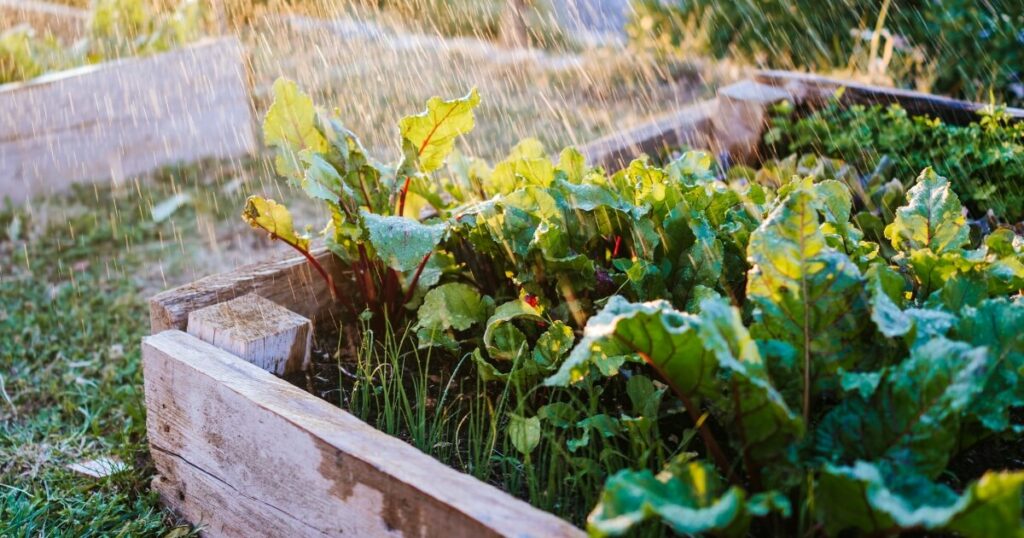
Raised beds tend to dry out faster than their in-ground counterparts.
It’s like they’re perched up there with the sun beating down, just begging for a drink more often. This means you’ll likely reach for that hose or watering can more frequently. On the bright side, you can optimize the soil mix for water retention by adding materials like coconut coir or peat moss because you control the soil mix.
However, keep an eye on your weather app! If you live in a region that gets plenty of rain, your raised beds might not need as much hand-holding with the watering can.
And when it does come time to water, consider drip irrigation systems or soaker hoses. They’re real time-savers and ensure water gets right to the roots where it’s needed most.
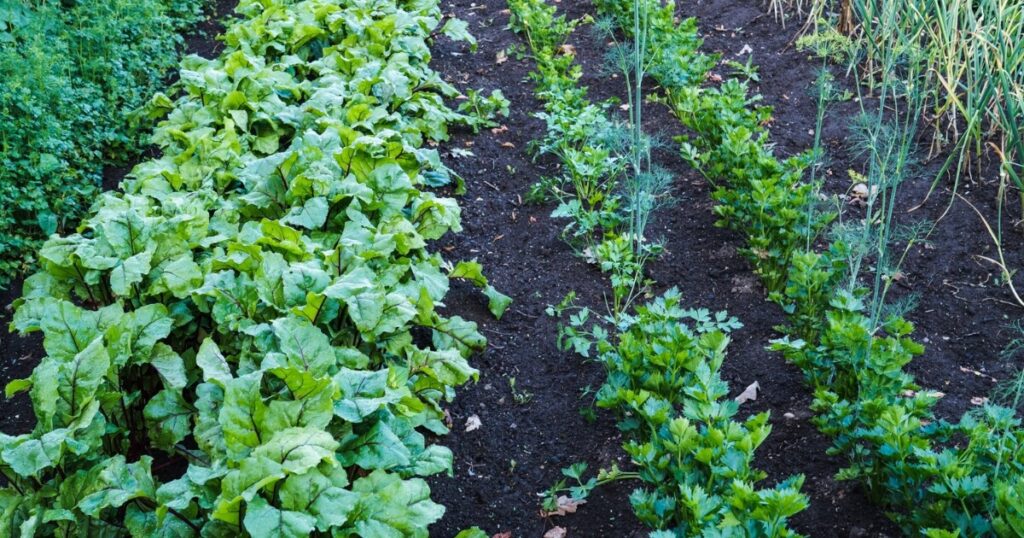
In-ground gardens have a bit of an advantage when it comes to moisture retention.
The earth itself acts like a large insulating blanket, keeping things cooler and moist for longer periods. But sandy soils will drain quickly (think sieve), while clay soils hold onto moisture like a sponge (sometimes too well).
If you’re gardening directly in the ground, mulching becomes your best ally against evaporation. A good layer of organic mulch of straw, wood chips, or leaves helps trap moisture and keeps your plants quenched even during hot spells.
Compare Cost and Longevity
Both gardening methods offer long-term sustainability if managed responsibly, so it’s a matter of balancing initial outlays against ongoing expenses and effort.
Whether you invest more at the start for a potentially easier ride with raised beds or choose the gradual investment of an in-ground garden depends on your circumstances and gardening goals.
Raised garden beds initially come with a steeper price tag.
You’re shelling out for materials to build the frames, plus all the soil and compost to fill them. For instance, costs can vary widely depending on your choices – cedar wood versus recycled plastic.

But maintenance costs can be relatively low once you’ve made that initial investment. With proper care, sturdy raised bed materials like stone or quality wood can last many years before needing replacement.
However, there’s an ongoing cost to consider: soil amendments. You’ll likely need to add more compost or organic matter each year to keep that soil rich and productive.
And if you opt for accessories like trellises or irrigation systems, factor those into your budget as well.
In-ground gardens are more forgiving on your finances from the get-go.
If you’re lucky enough to have fertile soil in your backyard, your start-up costs might be little more than seeds and sweat equity. Even if you need to improve your soil with compost or fertilizers, it’s generally less expensive than filling raised beds from scratch.
But don’t overlook long-term labor costs – especially if you value your time. Tilling, weeding, and amending soil in traditional gardens can be more labor-intensive year after year compared to raised beds.
This might not hit your pocketbook directly, but consider it an investment of a different kind: time is money, after all.
In terms of longevity, in-ground gardens have stood the test of time. They’ve been around since humans first stuck a seed in the earth. They can be sustainable indefinitely with practices like crop rotation and organic amendments that enhance soil health without depleting resources.
Raised Beds vs In-Ground: Verdict for Home Gardeners
My verdict on whether raised garden beds or in-ground gardening is better depends on your gardening style, needs, and aspirations.
Here’s a little guidance to help you pick the right match for your green thumb adventures.
If you appreciate tidiness, have limited mobility, or simply want to reduce the physical strain of gardening, raised beds are likely your best bet.
They’re also a great option for those dealing with rocky or poor soil since you can create an ideal growing environment from scratch. Urban gardeners or those with smaller spaces will find the compact and controlled nature of raised beds a perfect fit for balconies, patios, or small backyards.
If you’re looking to get dirty with hands-on work and have ample space to spare, in-ground gardens could be more up your alley.
They suit the budget-conscious gardener who prefers a more natural approach and doesn’t mind investing sweat equity into their patch of paradise.
Plus, if you plan on growing a wide variety of plants including deep-rooted species and large perennials, an in-ground garden offers the space and flexibility required for these plants to flourish.
Whichever path you choose in this garden fork in the road, may it lead to plentiful harvests and peaceful moments among your blooms and greens!





